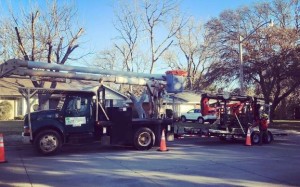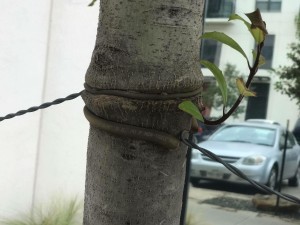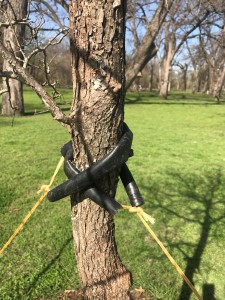Proper mulching for trees offers five key benefits. All five will help your tree grow and thrive year round. First, mulch insulates the soil, helping to tame rapid temperature changes in summer and winter. Second, mulch helps the tree’s root system retain water and stay moist as long as possible. Third, mulch helps prevent weeds and other unwanted plants from growing too close to the tree. This eliminates competition for water and other soil nutrients. Fourth, proper mulching can help prevent soil compaction. By “cushioning” the soil, mulch helps preserve the macro-pores necessary to store air and water in the soil. Last, a mulch ring prevents lawn mower damage to the base of the tree. Ideally mulch rings should extend to the edge of the tree’s canopy.
In newly planted trees, a mulch ring twice the size of the root ball’s greatest diameter is a good starting point. This may not always be possible, but make the ring as large as is feasible for the site and aesthetics, but always at least three feet in diameter. Carefully remove grass or sod so as to not damage any existing roots. Apply two to four inches of high quality composted mulch or wood chips. Do not let the mulch contact the trunk of the tree as this will cause problems later. Reapply mulch only as necessary. If a spring “freshen up” is desired, first try fluffing up existing mulch. If that does not suffice, reapply mulch, but stick to the depth guidelines of two to four inches and do not let the mulch contact the trunk. This may mean hauling some old mulch away!
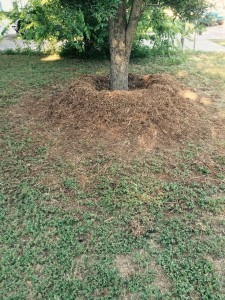 Bad
Bad
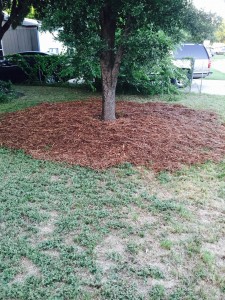 Good
Good
 Specific trees in the Fort Worth area that are infested are Hackberries, Cedar Elms, American Elms, and a host of other tree species. It is commonly spread through birds that eat berries and deposit seed throughout the tree’s canopy. Mistletoe affects the health, structure, and overall beauty of trees. It can cause severe tissue deformation, strength loss, breakage, dieback, reduced growth, reduced flowering and fruiting, increased stress, and susceptibility to other problems which ultimately leads to death. Depending on the amount of infestation mistletoe can have devastating effects on trees. We recommend removal of mistletoe in the dormant season (after leaves have fallen) so that it can be easily seen. With persistence and a yearly maintenance program, mistletoe damage can be controlled or minimized. Trees with large mistletoe infestation should be pruned by only seasoned professionals due to the tree’s overall loss of strength and its susceptibility to breakage.
Specific trees in the Fort Worth area that are infested are Hackberries, Cedar Elms, American Elms, and a host of other tree species. It is commonly spread through birds that eat berries and deposit seed throughout the tree’s canopy. Mistletoe affects the health, structure, and overall beauty of trees. It can cause severe tissue deformation, strength loss, breakage, dieback, reduced growth, reduced flowering and fruiting, increased stress, and susceptibility to other problems which ultimately leads to death. Depending on the amount of infestation mistletoe can have devastating effects on trees. We recommend removal of mistletoe in the dormant season (after leaves have fallen) so that it can be easily seen. With persistence and a yearly maintenance program, mistletoe damage can be controlled or minimized. Trees with large mistletoe infestation should be pruned by only seasoned professionals due to the tree’s overall loss of strength and its susceptibility to breakage.